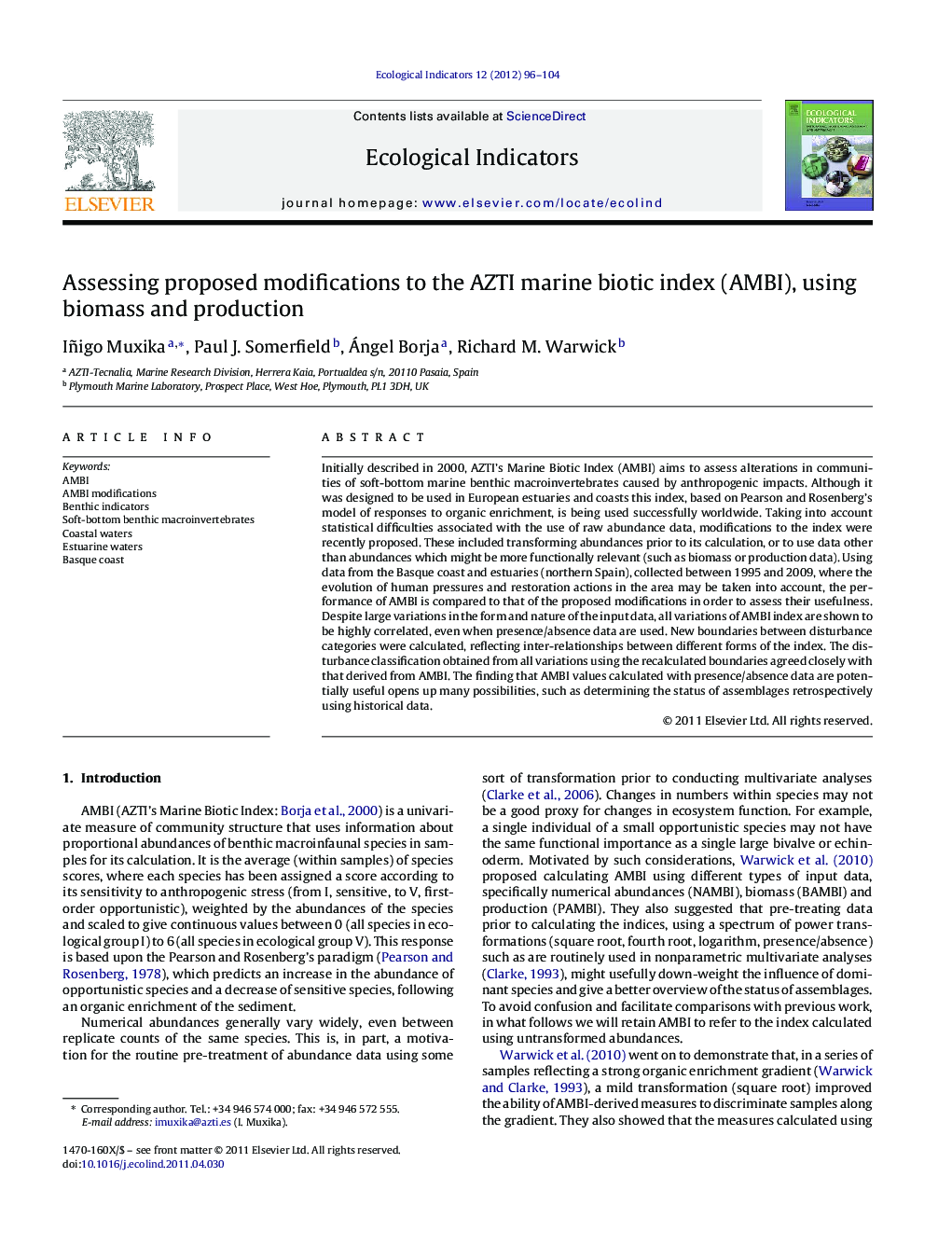| Article ID | Journal | Published Year | Pages | File Type |
|---|---|---|---|---|
| 4373839 | Ecological Indicators | 2012 | 9 Pages |
Abstract
Initially described in 2000, AZTI's Marine Biotic Index (AMBI) aims to assess alterations in communities of soft-bottom marine benthic macroinvertebrates caused by anthropogenic impacts. Although it was designed to be used in European estuaries and coasts this index, based on Pearson and Rosenberg's model of responses to organic enrichment, is being used successfully worldwide. Taking into account statistical difficulties associated with the use of raw abundance data, modifications to the index were recently proposed. These included transforming abundances prior to its calculation, or to use data other than abundances which might be more functionally relevant (such as biomass or production data). Using data from the Basque coast and estuaries (northern Spain), collected between 1995 and 2009, where the evolution of human pressures and restoration actions in the area may be taken into account, the performance of AMBI is compared to that of the proposed modifications in order to assess their usefulness. Despite large variations in the form and nature of the input data, all variations of AMBI index are shown to be highly correlated, even when presence/absence data are used. New boundaries between disturbance categories were calculated, reflecting inter-relationships between different forms of the index. The disturbance classification obtained from all variations using the recalculated boundaries agreed closely with that derived from AMBI. The finding that AMBI values calculated with presence/absence data are potentially useful opens up many possibilities, such as determining the status of assemblages retrospectively using historical data.
Related Topics
Life Sciences
Agricultural and Biological Sciences
Ecology, Evolution, Behavior and Systematics
Authors
Iñigo Muxika, Paul J. Somerfield, Ángel Borja, Richard M. Warwick,
